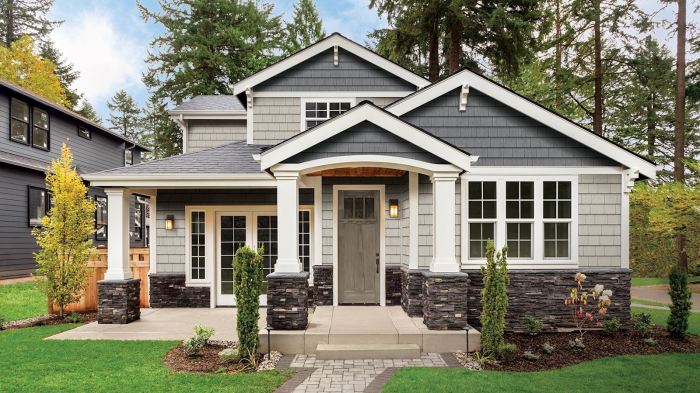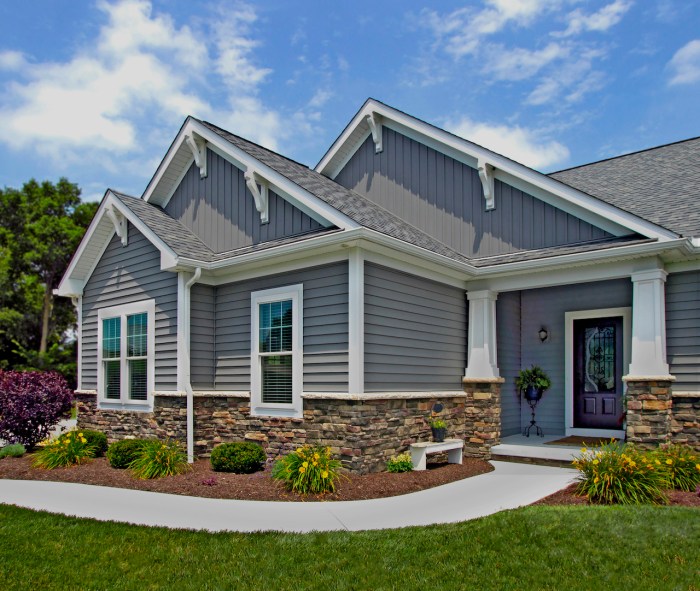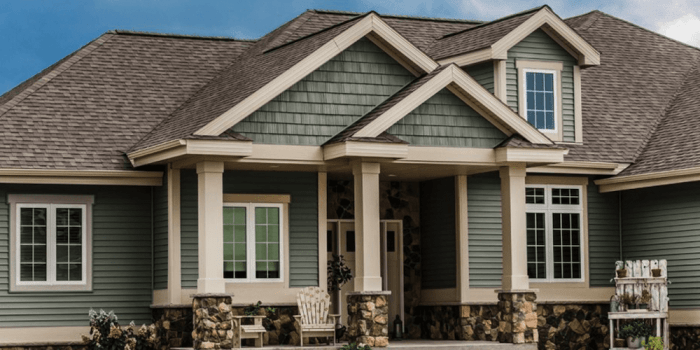Exploring New Home Siding Options: A Comprehensive Guide
Delve into the world of new home siding options with this detailed guide that covers everything you need to know. From different materials to cost considerations and design choices, this topic offers a wealth of information for homeowners looking to upgrade their exteriors.
Types of New Home Siding Options
When it comes to choosing siding for your home, there are several options available, each with its own unique set of benefits and drawbacks. Let's explore some of the most popular siding materials used today:
Vinyl Siding
Vinyl siding is a common choice for homeowners due to its affordability and low maintenance requirements. It is available in a wide range of colors and styles, making it easy to customize the look of your home. However, vinyl siding may not be as durable as other materials and can be prone to cracking or fading over time.
Wood Siding
Wood siding provides a classic, natural look that many homeowners love. It is also environmentally friendly and can be easily painted or stained to match your desired aesthetic. However, wood siding requires regular maintenance, including staining, painting, and sealing to protect it from moisture and pests.
Fiber Cement Siding
Fiber cement siding is a durable option that is resistant to rot, fire, and pests. It can mimic the look of wood or masonry without the same level of maintenance. While fiber cement siding is more expensive than vinyl, it can last for many years with minimal upkeep.
Metal Siding
Metal siding, such as aluminum or steel, offers excellent durability and is resistant to rot, fire, and pests. It is also available in a variety of colors and finishes to complement your home's style. However, metal siding can dent easily and may require repainting over time to maintain its appearance.
Cost Considerations

When considering new home siding options, it is essential to factor in the cost implications. The average cost of different siding materials varies significantly and can impact your overall budget for the project. In addition to the material costs, there are other factors that can influence the total cost of siding installation.Factors such as the size of the house, labor costs, and any additional features or customization can all contribute to the final price tag.
Larger homes will naturally require more materials and labor, leading to higher costs. Similarly, if you opt for premium materials or intricate designs, the overall cost can increase substantially.
Average Cost of Different Siding Materials
- Vinyl Siding: On average, vinyl siding costs between $3 to $7 per square foot for materials, with installation costs ranging from $4 to $8 per square foot.
- Fiber Cement Siding: Fiber cement siding typically costs between $5 to $12 per square foot for materials, with installation costs ranging from $6 to $12 per square foot.
- Wood Siding: Wood siding can cost between $6 to $10 per square foot for materials, with installation costs ranging from $8 to $12 per square foot.
- Brick Siding: Brick siding tends to be on the higher end, with costs averaging between $8 to $15 per square foot for materials and installation.
Cost-Effectiveness of Different Siding Options
- Vinyl Siding: Vinyl siding is considered one of the most cost-effective options in the long term due to its low maintenance requirements and durability.
- Fiber Cement Siding: While fiber cement siding has a higher upfront cost, its longevity and minimal maintenance needs make it a cost-effective choice over time.
- Wood Siding: Wood siding may require more maintenance and upkeep, potentially leading to higher long-term costs compared to other materials.
- Brick Siding: Brick siding, although costly initially, is known for its durability and longevity, making it a worthwhile investment in the long run.
Aesthetics and Design
When it comes to enhancing the curb appeal of a home, choosing the right siding material and design is crucial
Color Options, Textures, and Styles
Modern siding materials offer a wide range of color options, textures, and styles to choose from. Whether you prefer a traditional look or a more contemporary feel, there is a siding design to suit every taste. From bold and vibrant colors to subtle earth tones, the possibilities are endless.
Textures also play a key role in the aesthetics of the siding. Some materials mimic the look of wood grain, while others have a smooth, sleek finish. The choice of texture can add depth and visual interest to the exterior of the house.
Choosing the Right Siding Design
When selecting a siding design, it is essential to consider the architectural style of the house. For example, a farmhouse-style home may benefit from board and batten siding, while a modern home might look best with sleek metal panels. It's important to choose a design that complements the overall look of the property and enhances its unique features.
Eco-Friendly Siding Options

When it comes to siding options for your home, choosing eco-friendly materials can have a positive impact on the environment. Sustainable siding materials like recycled wood, fiber cement, or engineered wood are great choices for those looking to reduce their carbon footprint.
Recycled Wood
Recycled wood siding is a popular eco-friendly option that utilizes reclaimed wood from old structures, reducing the need for new materials. This not only helps in minimizing waste but also gives a unique and rustic look to your home.
Fiber Cement
Fiber cement siding is another environmentally friendly choice that is durable and low-maintenance. Made from a mixture of cement, sand, and cellulose fibers, this material is long-lasting and can withstand harsh weather conditions, reducing the need for frequent replacements.
Engineered Wood
Engineered wood siding is manufactured using wood fibers, resins, and wax, making it a sustainable alternative to traditional wood siding. It offers the beauty of real wood without the drawbacks of susceptibility to rot and pests, making it a long-lasting and eco-friendly option.
Energy-Efficient Siding
Aside from the material itself, choosing energy-efficient siding can also contribute to reducing your home's carbon footprint. Insulated siding options like insulated vinyl or insulated fiber cement can improve your home's insulation, leading to energy savings on heating and cooling costs.
Final Review

In conclusion, the realm of new home siding options is vast and varied, offering something for every homeowner's needs and preferences. Whether you prioritize durability, aesthetics, or eco-friendliness, there are options available to suit your requirements. Make an informed decision and enhance the beauty and functionality of your home with the right siding choice.
FAQ Summary
Is metal siding a cost-effective option?
Metal siding can be cost-effective in the long run due to its durability and low maintenance requirements.
Are there any eco-friendly siding materials besides wood?
Yes, options like fiber cement and engineered wood are also eco-friendly alternatives to traditional wood siding.
How can siding enhance the energy efficiency of a home?
Opting for energy-efficient siding choices can improve insulation, reducing energy consumption and costs in the long term.




